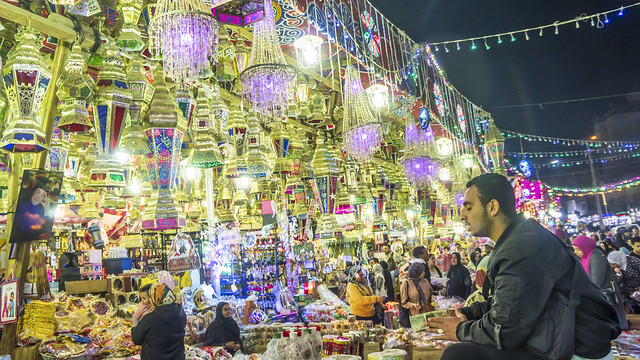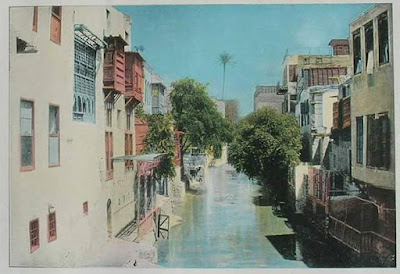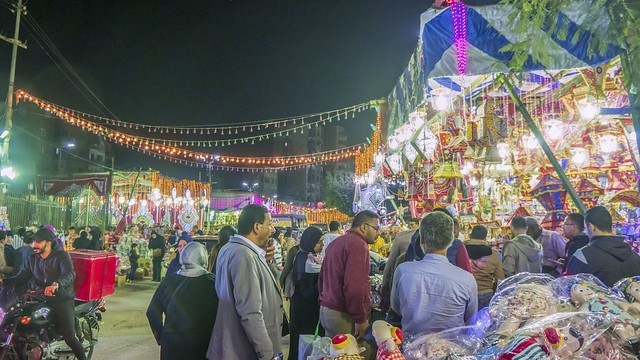If you are a veteran Egyptian Chronicles blog reader who has not got bored of my rants, you will know that in Ramadan I got some traditions like fewer politics, more of 1001 posts and the usual as well as annual trip to the Ramadan lanterns market at Cairo’s El-Seyada Zeinab.
It is an annual tradition which I love, and I hope that insh Allah I continue doing it.
Now there has been something that puzzled me concerning that market. It was one question that I have not yet had a definite answer to.
When or how did the Ramadan market start in El-Sadd El-Barani Street!?
My online research led me to the history behind El-Sadd El-Barani Street and that is what I share in the video below.
While ranting about what I discovered, you can see how packed the Ramadan lanterns market was despite the economic crisis. I filmed this on 15 March.
I believe that people especially from the working and middle classes want to celebrate Holy Month and its traditions despite the truly hard economic conditions.
 |
| The Ramadan Market at El-Sadd El-Barani street |
Historically and officially, the name "El-Sadd El-Barani Street" first appeared in modern Egyptian official records in 1898 when the Cairo Municipal authorities decided to backfill the "Egyptian Gulf".
This gulf was an artificial water canal utilized to link the Nile River with a lake that served as a means of preserving the Nile flood's excess.
Now when I checked the history of the “Egyptian Gulf”, I found out that the oldest mention of this artificial canal and its lake dates back to Ancient Egypt's Middle Kingdom.
It has been periodically dug and backfilled since that time.
During the times of the Ayyubid dynasty and Mamluks, the "Egyptian Gulf" was redesigned, particularly with the construction of the Cairo Citadel aqueduct or Cairo aqueduct.
 |
| Cairo aqueduct or what remains of it in modern Cairo on my way to El-Seyada Zeinab last fall |
The Cairo Citadel aqueduct, which is currently undergoing renovation, can be seen as a starting point on the way to El-Sayeda Zeinab from Garden City and Old Cairo.
I can’t imagine how that area was in the past considering the huge space we are speaking about.
El-Sadd El-Barani, which means "The external dam" in Arabic, was an area within the Egyptian Gulf that extended from the Nile bank to the current location of El-Sadd El-Barani street.
Historians note that there were both an external dam and an internal dam that held the water in a lake.
The external dam, also known as the "El-Sadd El-Barani," was a medieval dam constructed from dirt and rocks.
When the dam was opened, it indicated that the Nile flood was high, which was excellent news for farmers, and festivities were held in the El-Sadd El-Barani area to celebrate the coming of prosperity during the Nile flood festival.
However, things changed in the mid-19th century when Khedive Ismail decided to modernize Cairo and make it a piece of Europe.
In 1898, during the reign of Khedive Abbas Helmy II, the Cairo municipal authorities decided to backfill the Egyptian Gulf and the El-Sadd Barani since they were no longer useful.
Cairo had already implemented modern water, sewage, and drainage systems by then.
According to rare 19th-century photos of the area, there used to be a "Nile Venice" house there that disappeared as modern Cairo took over, and the Egyptian Gulf dried up.
 |
| An old coloured postcard from the 19th century for the houses on the banks of the Egyptian Nile Gulf |
Personally, I believe there is something in that street that continues in playing as a place for Egyptian local festivities whether during Ramadan or Moulid El-Nabawy or Moulid El-Seyada Zeinab or in the past in the case of the Nile flood festival.
 |
| El-Sadd El-Barani while hosting the famous Ramadan market |
I do not know if it is in our genes or what.
 |
| El-Sadd El-Barani while hosting the famous Ramadan market |
Another layer in the history of that buzzing street is that its official current name is not El-Sadd El-Barani.
Its current official name is Youssef El-Sibai.
The street name’s official name has changed from El-Sadd El-Barani to Youssef El-Sibai after the late Minister of Culture and author Youssef El-Sibai in 1978 following his assassination in the infamous Larnaca International airport affairs.
The late author and member of the Free officer was born in one of the famous alleys in El-Seyada.
Despite the official name on papers and maps including google maps, it is commonly known to this day publicly as El-Sadd El-Barani.
If you write in Google maps in Arabic “El-Sadd El-Barani”, it will show you “Youssef El-Sibai” street.
This is a short tale of multi-layered history in one single street in the city of Cairo and I have not yet gone deep into its buildings.
We are just speaking about street names.
 |
| El-Sadd El-Barani while hosting the famous Ramadan market |
Ironically, I may have known the history of the street itself but I have not known yet how or when the Ramadan market started, maybe this mystery is for another year inshallah to discover.

No comments:
Post a Comment
Thank You for your comment
Please keep it civilized here, racist and hateful comments are not accepted
The Comments in this blog with exclusion of the blog's owner does not represent the views of the blog's owner.